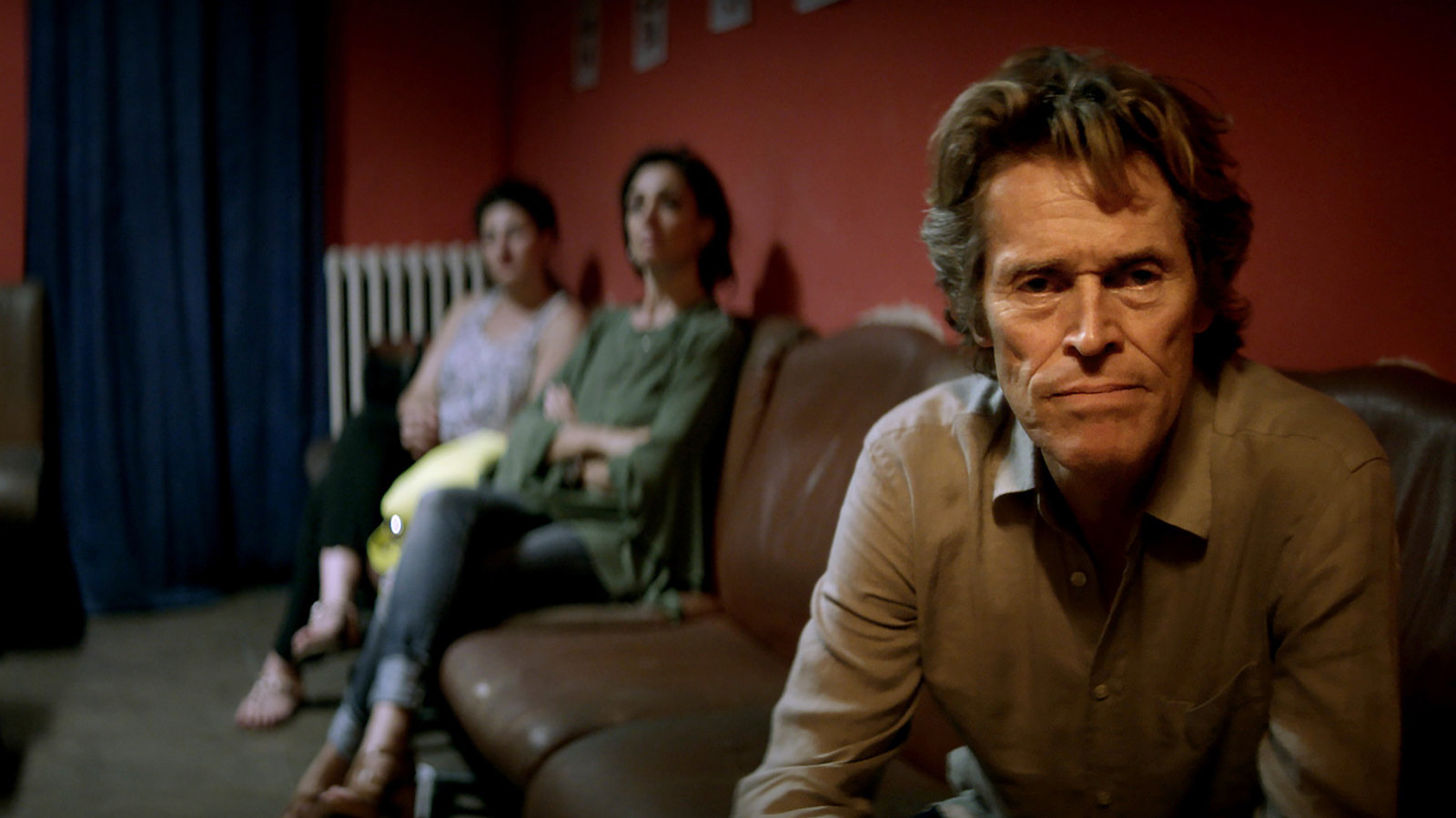What does it mean to suffer for your art? For storied director Abel Ferrara, it’s to (perhaps once again) make a film so autobiographical, it can’t help but be the kind of fiction that’s so hard to believe, you have to assume it’s grounded in the author’s lived-in reality. In Ferrara’s case, suffering for one’s art means a globe-trotting life and a collection of independently-minded films brimming with messages about addiction, getting to the brink of self-destruction, and ultimately the redemption one can find in achieving sobriety both in one’s physical body, as well as through their artistic endeavors. And if that wasn’t enough, Ferrara has the good sense to return to his often muse Willem Dafoe, who serves as both surrogate and martyr for reaching an audience currently shut out of the theater where they should be watching Tommaso.
We’re first introduced to Dafoe’s titular Tommaso as an aging American living in Italy. He’s learning Italian and getting good enough to hold fruitful conversations with the locals, and we witness a slice of his day-to-day, sauntering around Rome from cafes to markets, living a simple, humble existence. He comes home to a three-year-old daughter and a wife half his age (Ferrara’s real-life child Anna Ferrara and wife Cristina Chiriac), and the more we learn about Tommaso, the more we find out he’s a broken man with a damaged pride, trying desperately to recover from decades of alcohol and substance abuse as an American filmmaker, but unable to reconcile his former self with his current, more submissive role in a family that doesn’t always need him the way thinks they should. His only escape is just that: escapism through his nightmares and daydreams of a film not yet made—a real film, in fact, called Siberia, which comes out later this year.
As an Italian/Irish Catholic from the Bronx, Ferrara clearly has much to say about men who think they’re saviors for not giving in to their destructive urges, who think their repression of toxic masculinity means they’re really repressing their capacity for being successful, even ground-breaking artists. Ferrara understands—and Dafoe brilliantly illustrates—how underneath the surface of even the most genteel men lies a purely selfish user of other human beings. Tommaso may be sober when it comes to his drug addiction, but he’s still fully addicted to himself.
It’s fitting that Tommaso premiered at last year’s Cannes Film Festival alongside the international debut of Pedro Almodovar’s Pain and Glory, which theoretically handles the same subject matter, as it’s of course a semi-autobiographical feature about an older filmmaker dealing with drug addiction and fantasizing about his next film. But these films are more complementary than they are competitors, as Pain and Glory focused more on the romantic memories of its lead played by Antonio Banderas, while Tommaso submits that the only path forward for a man in personal crisis is, in fact, forward. No flashbacks, no meetings with ghosts of the past. Just current destruction in the name of creative rebirth.
Yes, it would be easy to denounce Tommaso as an indulgent imitation of the sorts of films filmmakers can’t help but make when they reach a certain point in their careers. But in its execution, the film haphazardly makes a brilliant point about the price of reinventing yourself without first learning empathy. This humanistic and arguably popular tactic tends to avoid the real problem of pride, because a new relationship and the birth of a child can only serve as momentary distractions from what ails the human spirit. Dafoe’s performance is transcendent, here, not solely because he’s a master of all the technical details critics usually box-check when evaluating an actor’s work. But because Dafoe ignores the typical standard forwhat makes a protagonist likable. In Tommaso, his anxieties aren’t easy to root for; he’s an insecure philanderer who disguises his shortcomings with a typically convincing performance. Sound familiar?
For Ferrara, true sobriety isn’t healing through bandaids and crowd-pleasing art. In fact, there’s a reason he places so much emphasis on the 12-step program in Tommaso. The first step, as we finally see his surrogate undertake, isn’t escaping to a new country, surrounding yourself with new people, and making yourself responsible for the lives of others. It’s admitting that as a man, you are powerless over your addiction to what society deems masculine. And left unchecked, it won’t really destroy you. You’ll just end up destroying yourself, and maybe even the people closest to you.
Advertisement
